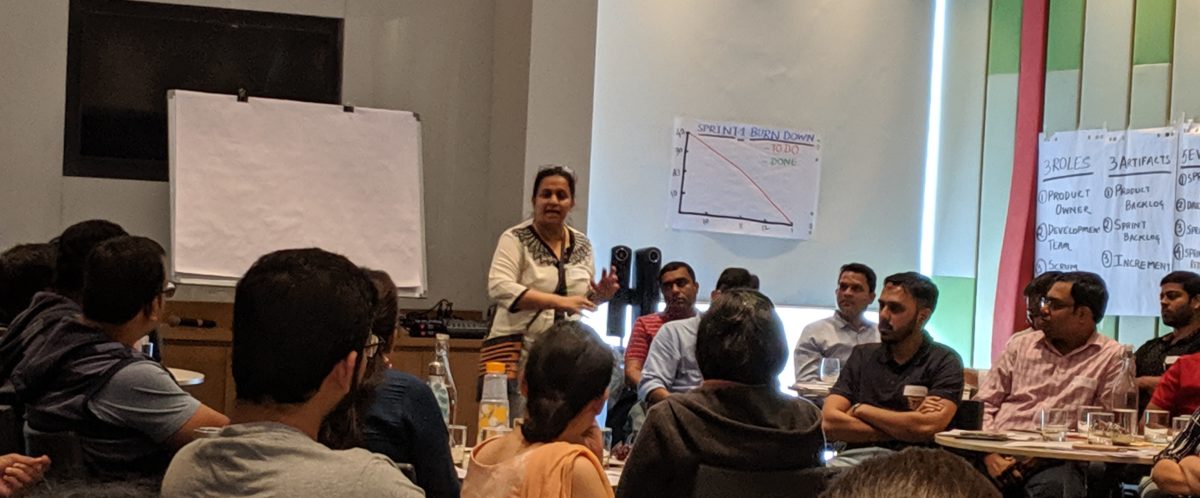Many organizations today are trying to start an agile transformation just for its sake. Its almost like that they are afraid of being left behind. Some stake holders perceive agile as a “compliance” activity that they must do in order to clear some audits.In fact, in one of the projects, one of the senior VPs told me “Ma’m all this agile and stuff is just a new name for the same old thing. It wont solve my problems“…. Many of us have come across this resistance when people don’t perceive any real value to them by going agile. They believe “we were delivering projects before, we will continue to deliver projects … how much difference a mere ‘way of work’ can bring?”
I have had some of my most notable successes, when I shifted the focus away from agile structure -( the events, artefacts and rules) to agile values and principles. I ask the stake holders a simple question “List some of your pain points in current way of project execution” Almost everyone has a long list of items that they claim are painful. I then move along further – In an ideal world – how these painful items would change? After I manage to do chip at the usual reluctance, we get to the meat – people start listing out things that they believe will help. Now we are in business. We then identify items that will bring most value to the organizations. These then become the value objectives for the transformations
Some points to keep in mind are
- Make sure that the items you identify, are adding real value to stakeholders. Its easy to have items that describe the behavior and not the result. We all are conditioned to track progress based on activities completed not results achieved . For example “code review done” is a behavior – the value can be “zero defect production release”
- Make sure the items on the list can be quantified and you agree on measurement criterion before hand. “10% improvement in time to market” is a better objective than “reduction in delays”
When the stakeholders see that their problems, the real problems are getting targeted, they are more open to change and having stakeholders who are at least open to ideal of a change is half the battle won…
Its important to keep the interest of the stakeholders, otherwise they lose interest quickly. Short sprints that show at least some measurable results is the best way to keep their interest alive and kicking – more about that in next post. Watch this space!

 I am Snehamayee!!!
I am Snehamayee!!!